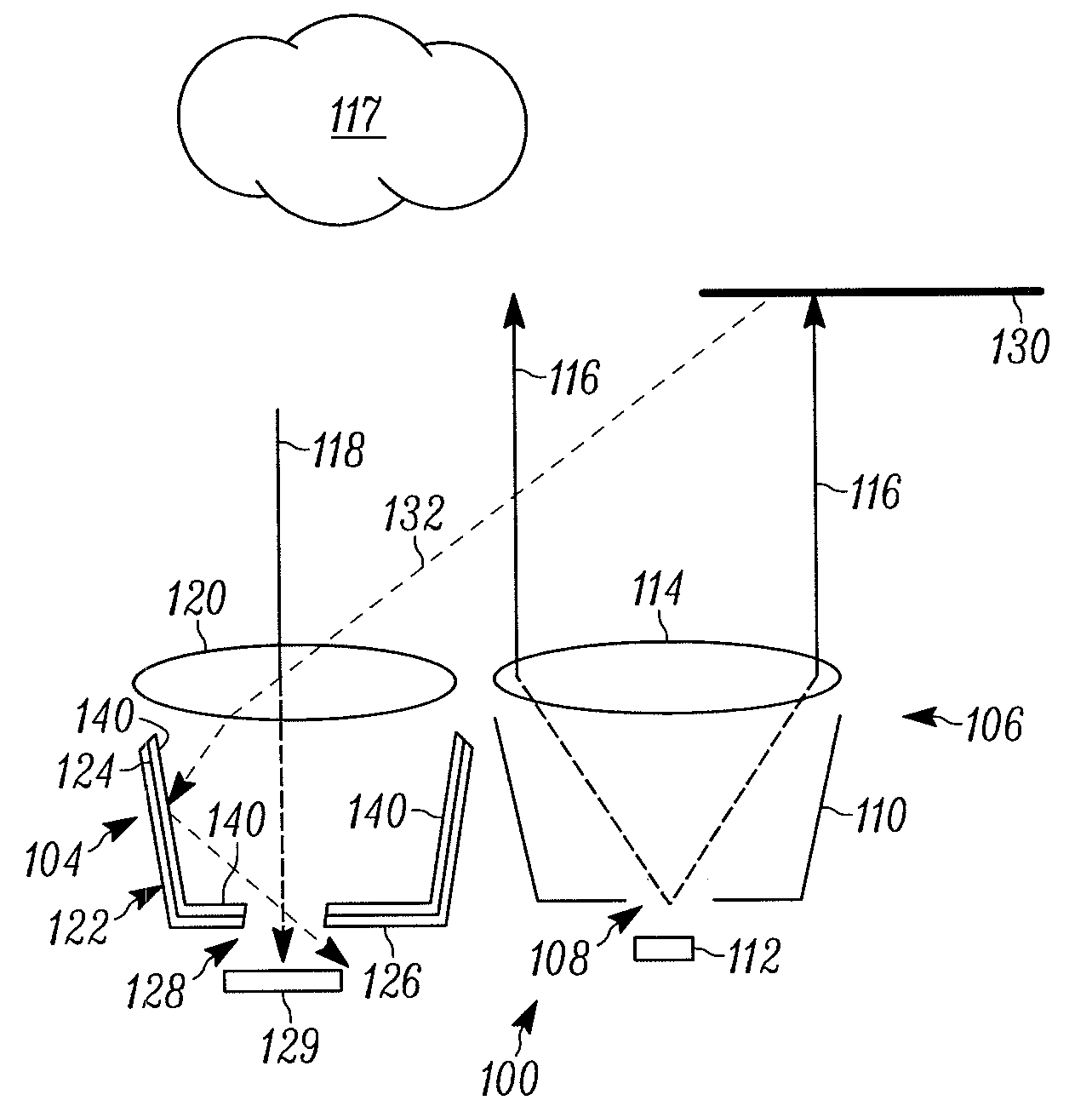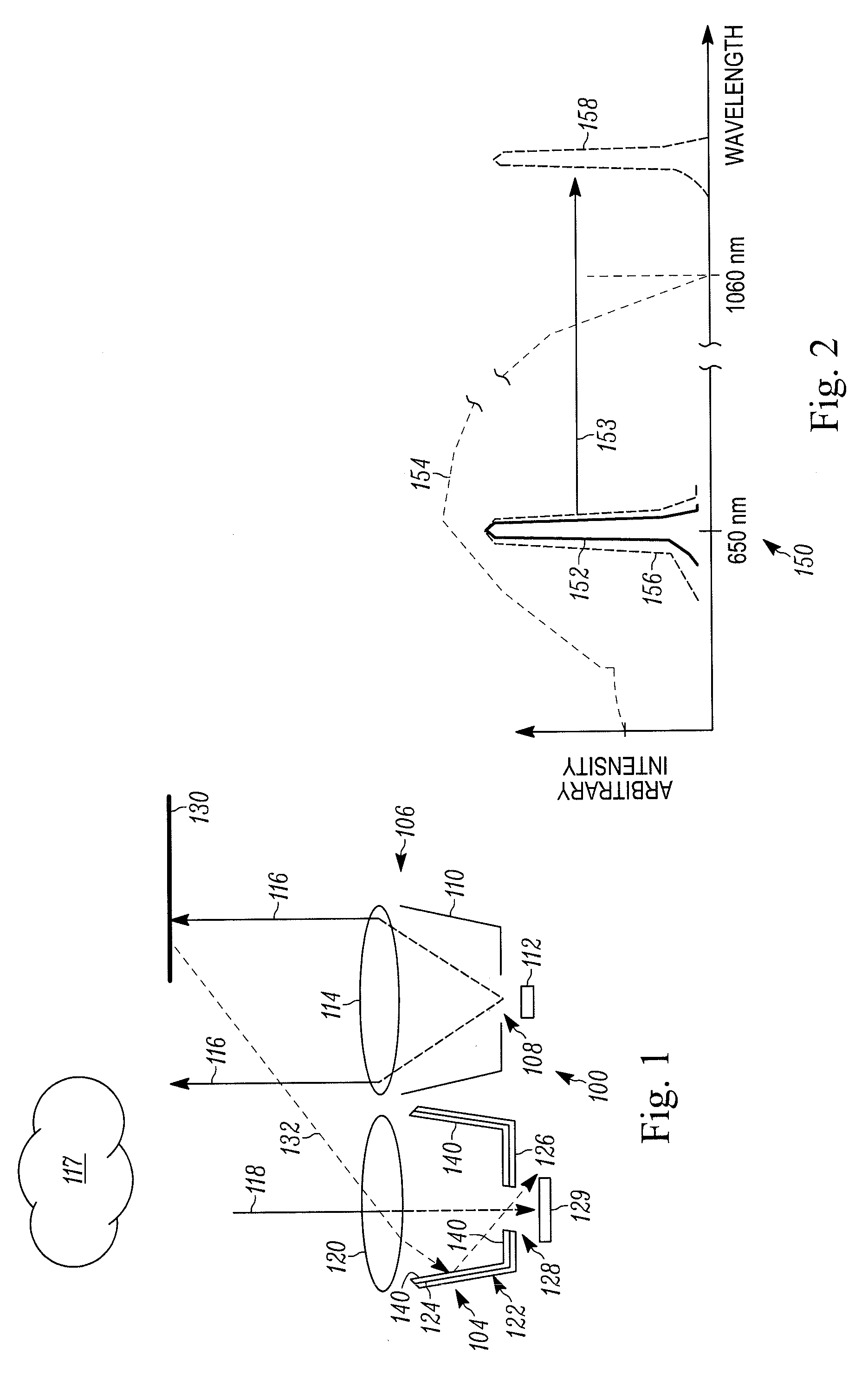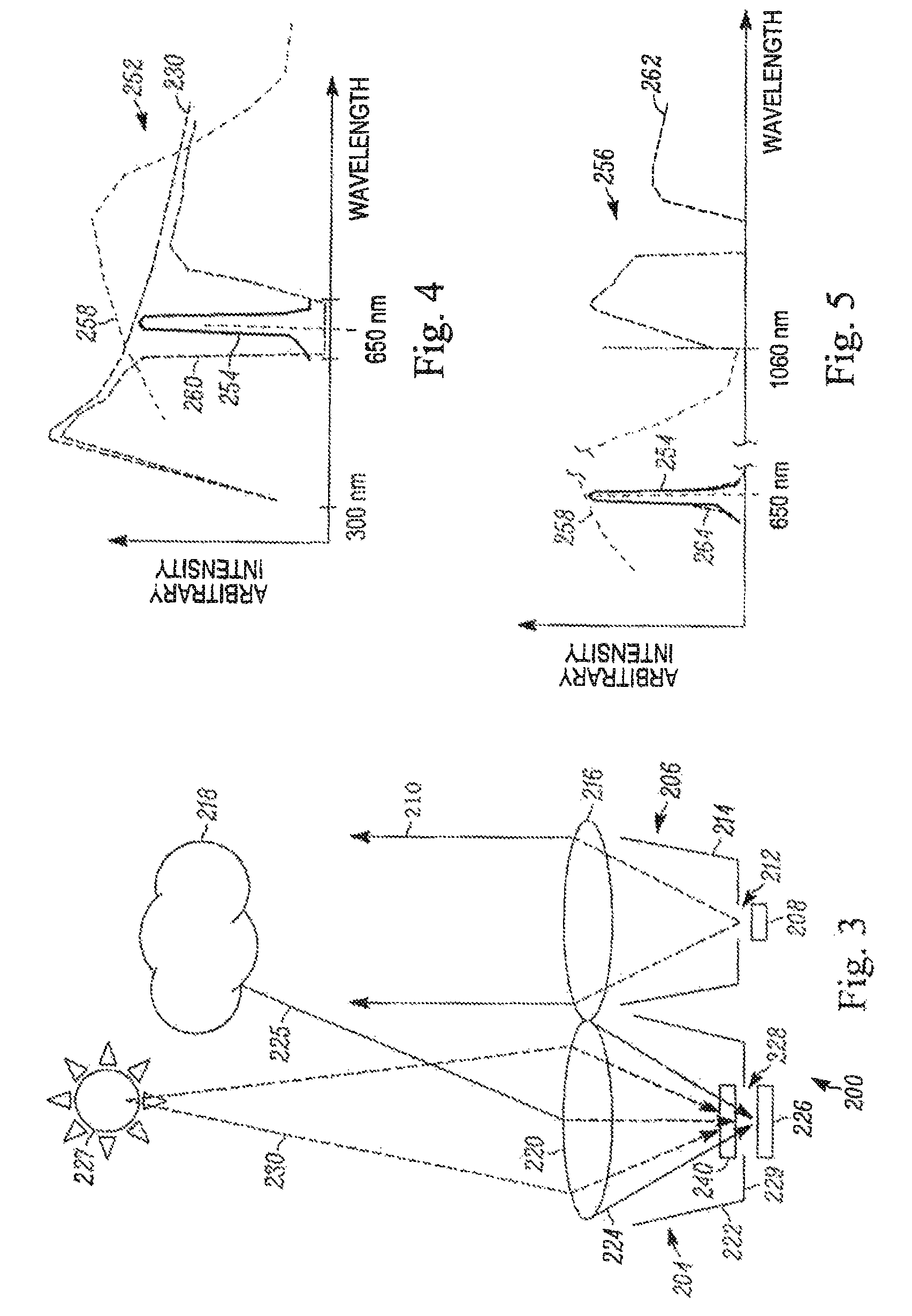System and method for reduction of optical noise
a technology of optical noise reduction and optical sensing, applied in the field of optical sensing systems and methods, can solve the problems of generating false detection within the sensor, affecting the accuracy of target sensing, so as to improve the sensor performance
- Summary
- Abstract
- Description
- Claims
- Application Information
AI Technical Summary
Benefits of technology
Problems solved by technology
Method used
Image
Examples
Embodiment Construction
[0032]FIG. 1 shows in schematic form a cross-sectional side view of an exemplary optical or photoelectric sensor 100. It is to be understood that the sensor 100 as well as the other sensors discussed herein can include in some embodiments, one or more of numerous types of optical or photoelectric sensors including, for example, Through-Beam sensors (includes transmitter / receiver types, light curtain types) where the transmitter and receiver are in separate enclosures; Transceiver sensors (Reflective, Polarized Reflective, Diffuse, Background suppression types, Color sensors, Clear Object types, scanner types), Color Contrast sensors, and Time-Of-Flight sensors (through-beam types, transceiver types, and imaging types) where volumetric information is captured by the sensor opto-electronics circuits.
[0033]The sensor 100 shown in FIG. 1 particularly is depicted in operational relation to an exemplary target object 117 and a lambertian reflector 130. The sensor 100 includes a receiver 1...
PUM
 Login to View More
Login to View More Abstract
Description
Claims
Application Information
 Login to View More
Login to View More - R&D
- Intellectual Property
- Life Sciences
- Materials
- Tech Scout
- Unparalleled Data Quality
- Higher Quality Content
- 60% Fewer Hallucinations
Browse by: Latest US Patents, China's latest patents, Technical Efficacy Thesaurus, Application Domain, Technology Topic, Popular Technical Reports.
© 2025 PatSnap. All rights reserved.Legal|Privacy policy|Modern Slavery Act Transparency Statement|Sitemap|About US| Contact US: help@patsnap.com



